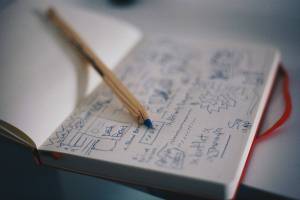Personal and professional growth is a continuous process that plays a crucial role in our lives. One of the most effective ways to manage and stimulate this growth is through a personal development plan. This article provides a comprehensive guide on how to create a beneficial personal development plan that will lead you to success.
Understanding Personal Development: Key Concepts
Personal development is an ongoing process of self-improvement, self-awareness, and personal growth. It’s a vital aspect of crafting a fulfilling life, boosting emotional wellbeing, relationships, careers, and overall happiness. Personal development is often facilitated by a positive relationship with a counselor or coach, and it aims to enhance various aspects of clients’ lives.
Theoretical Foundations of Personal Development
Several psychological theories underpin personal development. These theories offer valuable insights into the psychological processes underlying personal development and provide a foundation for coaches and counselors to support their clients effectively.
1. Maslow’s Hierarchy of Needs
Abraham Maslow, a proponent of the humanistic approach, suggested that individuals have a hierarchy of needs. These needs start from basic physiological and safety requirements and progress through psychological and self-fulfillment needs. Personal development is often found in or recognized by the pursuit of higher-level needs, such as self-esteem and self-actualization.
2. Erikson’s Psychosocial Development
Erik Erikson mapped out a series of eight psychosocial development stages that individuals go through across their lifespan. Each stage involves challenges and crises that, once navigated successfully, contribute to personal growth and identity development.
3. Piaget’s Cognitive Development
Jean Piaget focused on cognitive development in children and how they construct their understanding of the world. His stages of cognitive development, including intellectual growth and adaptability, inform our personal development.
4. Bandura’s Social Cognitive Theory
Albert Bandura emphasized the role of social learning and self-efficacy in personal development. His theory highlights that individuals can learn and grow through observation, imitation, and belief in their ability to effect change.
5. Self-Determination Theory
Ryan and Deci’s motivational self-determination theory recognizes the importance of autonomy, competence, and relatedness in personal development. Their approach suggests that individuals are more likely to experience growth and wellbeing when such basic psychological needs are met.
6. Positive Psychology
Positive psychology, developed by Martin Seligman, focuses on strengths, wellbeing, and the pursuit of happiness. Seligman’s PERMA model offers a framework for personal development that emphasizes identifying and using our strengths while cultivating positive emotions and experiences.
7. Cognitive-Behavioral Theory (CBT)
Developed by Aaron Beck and Albert Ellis, CBT explores the relationship between thoughts, emotions, and behavior. This theory provides practical techniques for personal development, helping individuals identify and challenge negative thought patterns and behaviors.
Role of Coaching in Personal Development


Coaching plays a pivotal role in personal development, acting as a catalyst for change and growth. At its core, person-centered coaching is a transformative process, deeply rooted in the partnership between the client and the coach. This relationship is crucial for fostering an environment where significant personal growth can occur.
The essence of effective coaching lies in a set of core beliefs centered around the client’s potential and responsibility. The coach’s primary role is to empower the client, reinforcing the idea that the individual holds the power to create their desired outcomes. This empowerment comes from the coach’s unwavering belief in the client’s capabilities and the commitment to treat the client as an equal partner in the journey of development.
In person-centered coaching, the coach adopts a supportive stance, encouraging the client to explore their aspirations and challenges in a safe and nonjudgmental space. This approach is built on the foundation of mutual respect and trust, which are vital for the client’s willingness to engage deeply in the coaching process.
A significant aspect of coaching in personal development is the focus on goal achievement. The coach helps the client to clarify their goals, understand the obstacles they face, and devise strategies to overcome these challenges. This collaborative process involves a continuous cycle of setting goals, taking action, reflecting on the results, and adjusting the approach as needed.
Moreover, coaching provides the structure and accountability many individuals need to move forward. Coaches use various tools and techniques to facilitate self-discovery, enhance motivation, and develop the skills necessary for personal and professional growth. Through regular sessions, clients are encouraged to take consistent actions toward their goals, making the process of personal development both intentional and systematic.
The success of coaching in personal development also hinges on the coach’s ability to remain nonjudgmental and open-minded. By viewing the client as a whole person, the coach can help uncover the unique strengths and values that drive the individual’s actions and decisions. This holistic perspective allows the coach to tailor the coaching process to fit the client’s personal context, enhancing the relevance and impact of the guidance provided.
In summary, coaching is a powerful tool for personal development, with the client-coach relationship at its heart. Effective coaching is characterized by a belief in the client’s potential, a commitment to equal partnership, and a focus on goal achievement. Through this supportive process, individuals are empowered to take responsibility for their results, unlocking their potential for growth and transformation.
Steps to Create a Personal Development Plan


A personal development plan is a powerful document that creates mutual clarity of the aims and focus of a coaching assignment. It should be short and succinct, providing a quick reference or point of discussion and regularly revised and updated.
Step 1: Define Results and Motivation
The first step in creating a personal development plan involves defining your results and motivation. Consider where you want to be and why you want to get there. Understanding why you want to improve yourself is essential for your motivation to maintain your success.
Step 2: Identify Required Skills
Once you understand your goal, the next step is to identify the skills you need to achieve this outcome. List all the skills needed to achieve the results you desire and don’t be overwhelmed if the list seems long. You can explore all possible avenues for development.
Step 3: Conduct a Skills Self-Assessment
Assess the skills needed to achieve your personal growth goals. Identify which skills you already possess, and which ones will take some time to learn. An outside perspective from supervisors or friends can be beneficial when considering which of your skills could use some development.
Step 4: Isolate One Skill
Choose one relevant skill to help you discover the area you will focus on first. This skill should be something you can work on that will help you get closer to your goal.
Step 5: Develop an Action Plan
The final step in creating a personal development plan is to develop an action plan. Use the “SMART” goal-setting method to make your goals Specific, Measurable, Attainable, Relevant, and Time-bound. Celebrate your successes and stick to the deadlines you set.
Examples of Personal Development Plans


1. Area of Development Plan
This type of plan zeroes in on specific skills or competencies that an individual aims to improve. It’s highly focused and often includes a mix of professional and personal areas for growth. For example:
- Skill to Develop: Public Speaking
- Goals: To deliver a compelling presentation to a large audience without experiencing debilitating anxiety.
- Actions: Enroll in a public speaking course, join a local Toastmasters club, practice daily with personal feedback sessions, and watch TED Talks to analyze effective speaking styles.
- Timeline: 6 months to see noticeable improvement, with the aim of delivering a presentation at the end of the period.
- Measurement: Progress will be measured by the ability to speak in front of groups with increasing size, receiving constructive feedback, and self-assessed comfort level.
2. Opportunities for Development Plan
This plan combines self-assessment with goal setting, focusing on leveraging strengths while addressing weaknesses and opportunities. It’s comprehensive, covering short- and long-term objectives. An example might look like:
- Short-Term Goal: Improve time management to enhance daily productivity.
- Long-Term Goal: Achieve a managerial position in the next 3 years.
- Strengths: Strong analytical skills and attention to detail.
- Weaknesses: Procrastination and poor delegation.
- Development Opportunities: Leadership training, project management certification.
- Actions: Use a digital planner for task management, delegate minor tasks to team members, enroll in a leadership course, and seek mentorship from a senior manager.
- Timeline: Short-term goals to be achieved within 6 months, long-term goals within 3 years.
- Measurement: Increased daily task completion rate, feedback from peers and supervisors, and successful completion of certification.
3. Ideal Self Plan
Focused on the broader vision of who you want to become, this plan encourages deep reflection and aspirational goal setting. It’s particularly useful for personal transformation. An example might involve:
- Vision of Ideal Self: Become a confident, influential leader who inspires innovation.
- Goals: Develop leadership skills, improve communication, and cultivate a creative mindset.
- Actions: Attend a leadership retreat, participate in creative thinking workshops, read one book per month on leadership and innovation, seek a mentor in the leadership field.
- Timeline: 1 year to establish foundational leadership qualities, with ongoing efforts for continual improvement.
- Measurement: Feedback from colleagues and mentors, self-assessment of confidence in leadership situations, number of innovative ideas proposed and accepted at work.
Each of these plans starts with a clear understanding of the current state and maps out a path toward a desired future state. They are personalized, actionable, and include specific metrics for tracking progress, ensuring the individual feels connected to and in control of their personal development journey.
Setting Goals and Objectives: Tips and Tools
Creating clear and achievable goals is a cornerstone of effective personal development. Goals give you a sense of direction and a measurable path towards success. They fuel motivation and keep you focused on what’s important. Here are some tips and tools to set impactful goals:
1. Use the SMART Framework
The SMART goal-setting framework is a powerful tool to ensure your goals are structured for success. Here’s how to apply it:
- Specific: Your goal should be clear and specific enough to focus your efforts and feel real. Instead of “get better at speaking,” aim for “improve public speaking skills to confidently deliver presentations.”
- Measurable: Include precise amounts, deadlines, or other indicators to measure progress. For example, “speak at two conferences by the end of the year” gives you a clear target to hit.
- Attainable: Ensure that your goal is realistic and achievable within your current resources, skills, and time constraints.
- Relevant: Your goals should align with your values and long-term objectives. This ensures that your efforts are focused on what’s truly important to you.
- Timely: Every goal needs a deadline. This helps you prioritize and motivates you to take action.
2. Break Goals into Actionable Steps
Large goals can feel overwhelming. Break them down into smaller, manageable tasks. This makes it easier to start and maintain momentum. For example, if your goal is to write a book, start with daily writing targets or chapter outlines.
3. Utilize Goal-Setting Apps
Several apps can help you track your goals and progress. Tools like Trello, Asana, or Evernote allow you to organize your goals, set deadlines, and monitor your achievements. Choose an app that fits your style and keep it updated as you progress.
4. Keep a Goal Journal
Writing down your goals increases your commitment and clarity. Maintain a goal journal to reflect on your progress, obstacles, and learning experiences. This can be a dedicated notebook or a digital document.
5. Celebrate Milestones
Setting and achieving milestones along the way to your larger goals keeps you motivated. Celebrate these achievements, no matter how small, to maintain your enthusiasm and commitment.
6. Seek Feedback
Regular feedback on your progress can provide new insights and help adjust your strategies if needed. Whether it’s from a coach, mentor, or peer, constructive feedback is invaluable.
7. Stay Flexible
Be prepared to revise your goals as you progress. Flexibility allows you to adapt to changes and overcome unforeseen challenges without losing sight of your ultimate objectives.
By applying these tips and tools, you can set effective goals that are aligned with your personal development plan. Remember, the goal-setting process is ongoing. Regular review and adjustment ensure that your goals remain relevant and achievable, propelling you towards your desired outcomes.
Skills to Foster Personal Development
Many skills contribute to and enhance personal development. These include people skills, task management and problem-solving abilities, and confidence in creative abilities. Improving these skills can boost your confidence and your ability to achieve your personal development goals.
1. People Skills
Developing rapport, practicing listening, teamwork, assertiveness and negotiation, leadership, and learning to give and receive constructive criticism are all valuable people skills that can aid in personal development.
2. Task Management and Problem-Solving Skills
Organizing time and tasks effectively and learning fundamental problem-solving strategies can help you navigate challenges on your path to development and growth.
3. Creative Abilities
Understanding how the mind works, exploring activities to sharpen creative thinking, and learning to ignite the spark of creativity that helps generate innovative ideas are all ways to cultivate confidence in your creative abilities.
Recommended Resources for Further Learning
Here are three books that provide valuable insights into personal development:
- The Coaching Manual: The Definitive Guide to the Process, Principles, and Skills of Personal Coaching by Julie Starr
- The Big Leap: Conquer Your Hidden Fear and Take Life to the Next Level by Gay Hendricks
- The Gifts of Imperfection: Let Go of Who You Think You’re Supposed to Be and Embrace Who You Are by Brené Brown
These books offer a wealth of knowledge and practical advice on personal development, goal setting, overcoming fears, and embracing authenticity.
Conclusion
Personal development is a lifelong process that enhances wellbeing and creates a richer, more engaging environment for the individual and those around them. A well-crafted personal development plan can be a powerful tool in this process, guiding you towards your goals and helping you achieve success. By understanding the theories underpinning personal development, setting clear and attainable goals, and nurturing key skills, you can embark on a rewarding journey of self-improvement and growth.
Personal Development Plan FAQs
What do you write in a personal development plan?
In a personal development plan (PDP), you write your goals, the skills you need to develop, the actions you’ll take to achieve those goals, and the timeline for your progress. It should also include a reflection on your current skills and an evaluation plan to track your development.
What are 5 areas of personal development plan?
Five key areas of a personal development plan often include:
- Professional Skills – Enhancing job-related skills and competencies.
- Emotional Intelligence – Improving self-awareness, empathy, and stress management.
- Physical Health – Focusing on exercise, nutrition, and wellness.
- Intellectual Development – Expanding knowledge and stimulating mental activities.
- Social Skills – Building better communication skills and relationships.
What are the five crucial components of a personal development plan?
- Self-Assessment: Identifying your strengths, weaknesses, and interests.
- Goal Setting: Defining clear, measurable, and achievable goals.
- Action Plan: Outlining the steps, resources, and timeline needed to achieve your goals.
- Skill Development: Focusing on the skills you need to develop or improve.
- Review and Adjust: Regularly reviewing progress and making adjustments as needed.
How do you write an individual development plan?
To write an individual development plan, follow these steps:
- Start with self-assessment to understand your current situation and aspirations.
- Set specific, measurable, achievable, relevant, and time-bound (SMART) goals.
- Outline actionable steps to achieve these goals, including resources you’ll need.
- Identify the skills and knowledge areas you need to develop.
- Set deadlines for each goal and step.
- Include a plan for tracking progress and a schedule for regular review.
What are some examples of personal development?
Examples of personal development include:
- Learning a new language or skill (e.g., coding).
- Enhancing communication or leadership skills.
- Taking courses for professional certification.
- Adopting a healthier lifestyle with regular exercise.
- Practicing mindfulness or meditation to improve mental health.
What are examples of development plans?
Examples of development plans include:
- A career development plan focused on achieving a promotion or transitioning to a new field.
- A health and wellness plan aiming to improve physical fitness and dietary habits.
- An educational plan for acquiring new qualifications or knowledge in a specific area.
What does a good personal development plan look like?
A good personal development plan is clear, detailed, and tailored to the individual. It outlines specific goals, the steps to achieve them, and timelines. It includes both short-term and long-term goals, focuses on various areas of development, and has a regular review process to adjust the plan as needed.
How do I write a growth idea for myself?
To write a growth idea for yourself:
- Reflect on areas you want to improve or goals you wish to achieve.
- Choose a specific area to focus on, such as a skill or personal quality.
- Set a SMART goal related to this area.
- Break down the goal into smaller, actionable steps.
- Decide on a timeline and how you’ll measure progress.
What is an example of a personal development goal?
An example of a personal development goal could be improving public speaking skills. This might involve setting specific objectives like attending a public speaking workshop, practicing speeches in front of friends or a mirror, and aiming to speak at a public event within six months.
Featured Image Credit: Photo by Miquel Parera; Unsplash – Thank you!













